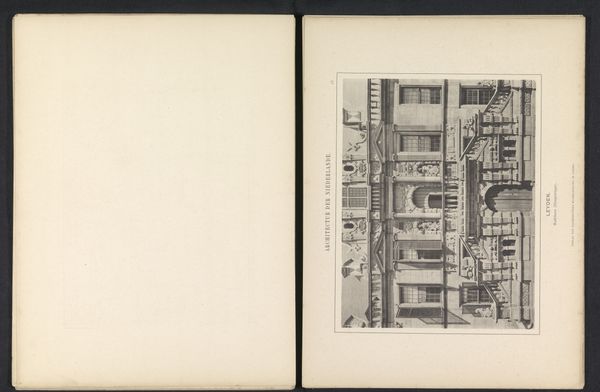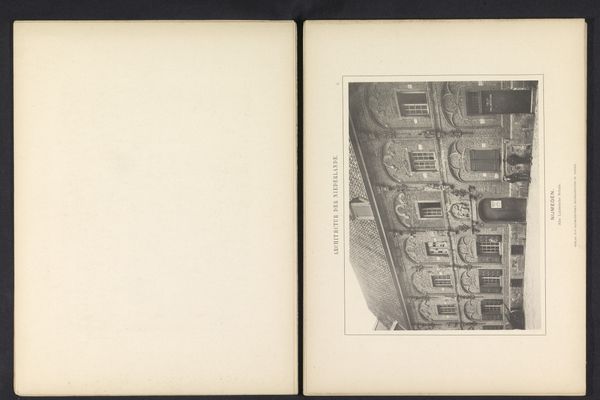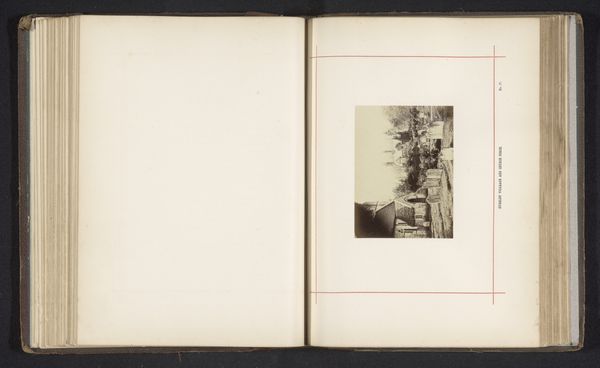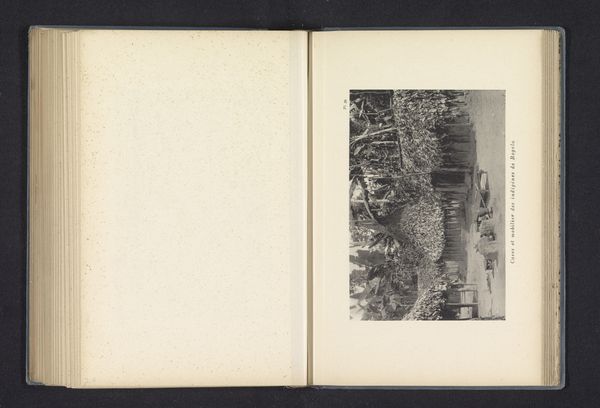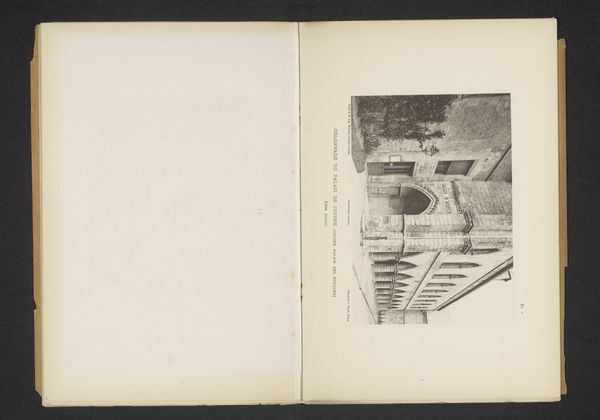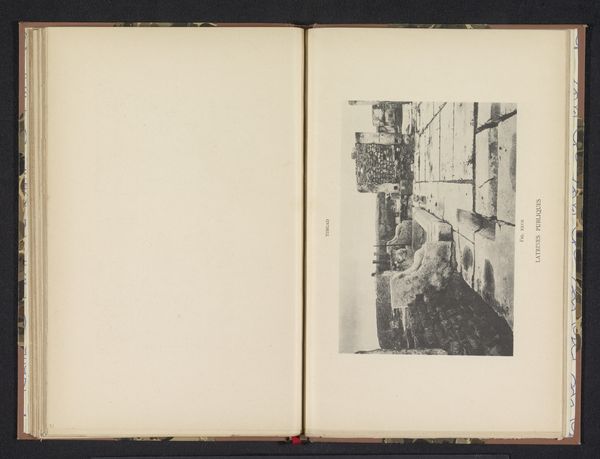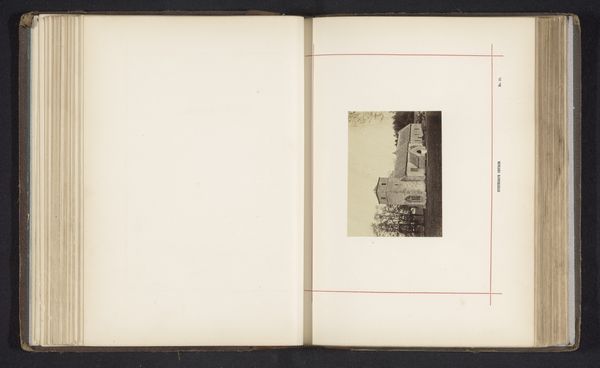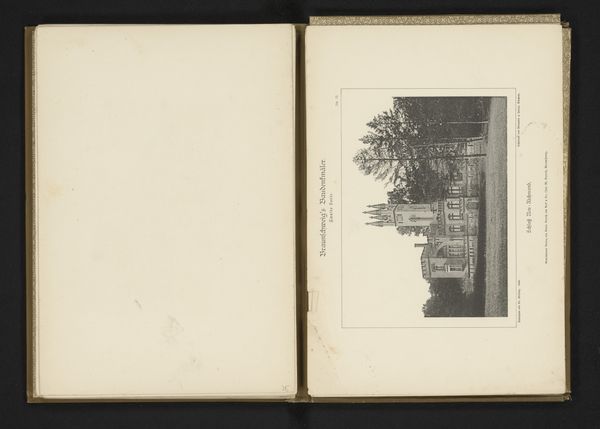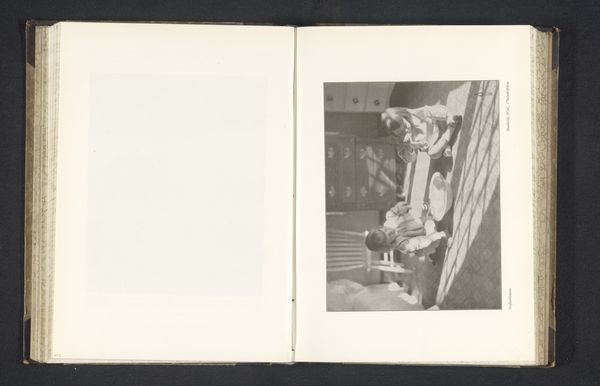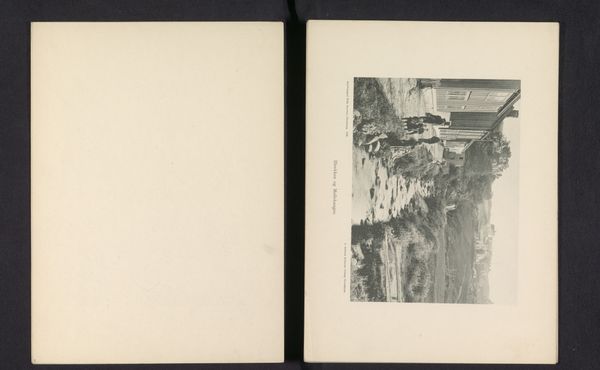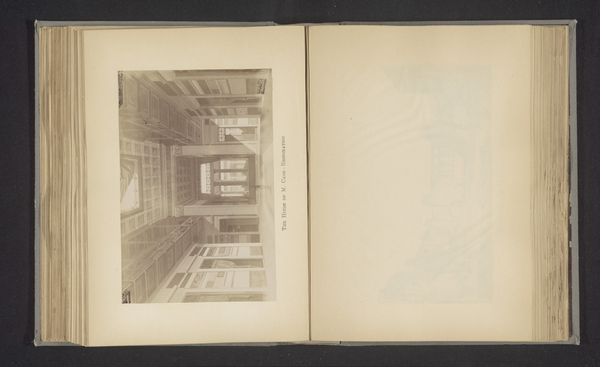
print, photography, architecture
#
script typography
# print
#
old engraving style
#
sketch book
#
hand drawn type
#
photography
#
personal sketchbook
#
hand-drawn typeface
#
pen-ink sketch
#
pen work
#
sketchbook drawing
#
cityscape
#
sketchbook art
#
architecture
#
realism
Dimensions: height 196 mm, width 258 mm
Copyright: Rijks Museum: Open Domain
Editor: Here we have a print called "Gezicht op de trap van de Waag in Deventer," dating from before 1894. It's an anonymous work from the Rijksmuseum's collection. The details are so fine; it almost looks like a photograph! What do you make of this architectural rendering? Curator: It’s more than *just* an architectural rendering. Think about the function of the Waag, the weighing house, historically. These were central to civic life, spaces where trade, economic power, and even social status were negotiated. This image, made before 1894, might be a commentary on the rapidly changing social and economic structures of the Netherlands during industrialization. Do you see how the artist chooses to represent the building, the angle, the level of detail included and excluded? Editor: That's an interesting perspective. I was focused on the aesthetic aspect – the way the lines create this almost dizzying sense of perspective. The social context makes it more profound. Do you think the lack of human figures contributes to the commentary you suggest? Curator: Precisely. The absence is striking, isn’t it? Is the building the most important figure in the image? Where are the merchants, the laborers, the consumers? Perhaps the empty stage suggests an alienation from the very systems the Waag represents. Maybe the building stands alone. Editor: It certainly changes how I view the piece! So, it's not just about architectural accuracy but also a statement about the societal shifts of the time. Curator: Exactly! By analyzing these visual and historical threads, we reveal a richer understanding of the work, especially what that absence conveys in our historical memory. Editor: This conversation really brought new aspects of historical interpretation of art into my vision. Thank you for shedding light on social commentary in an early photograph!
Comments
No comments
Be the first to comment and join the conversation on the ultimate creative platform.
